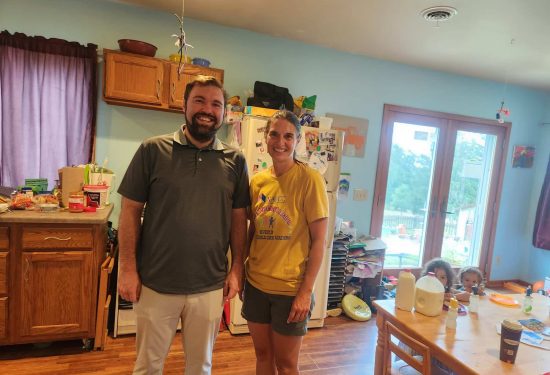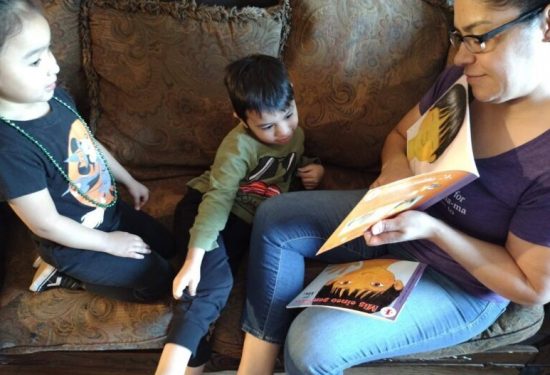“Find a penny, pick it up and all day long you’ll have good luck.” But home-based child care providers in the Child and Adult Care Food Program (CACFP), the federal program that reimburses child care providers for meals served to children while in care, need more than luck, and they need an increase of more than pennies a day to serve healthy meals and snacks.
Here is what is happening:
For many children, the healthy food provided while at child care is their primary source of food. The CACFP is a major revenue source for participating home-based child care providers, and food costs are a major expense to programs. Without a robust CACFP program, children are faced with missing out on the adequate nutrition they need to grow healthy bodies and minds. The USDA found that the diets of children in care were higher in quality and better aligned with the U.S. Dietary Guidelines for Americans on child care days than non-child care days.
Each year, the federal government reevaluates the reimbursement rates for CACFP using the Consumer Price Index. On July 10, the USDA published the updated CACFP reimbursement rates for child care centers and home-based child care for this program year (July 2024-June 2025). The modest CACFP reimbursement rate increases, only 1% for home-based child care and 4% for centers, will do little to address the ongoing financial hardship providers face in providing high-quality, nutritious food to young children.


*For the full payment chart including Alaska, Hawaii, Guam, Puerto Rico, and Virgin Islands, and CACFP Sponsors, please go to Federal Register/Vol. 89, No. 132/Wednesday, July 10, 2024/Notices
**Congress directs USDA to update CACFP reimbursement rates every year based on specific categories of the Consumer Price Index (CPI): for child care centers using the CPI for “food away from home” and for home-based child care using the “food at home” CPI. Congress created a two-tier payment system for home-based child care providers in CACFP. The second tier participants are paid about half of what the Tier I providers receive.
“I think people need to hear and understand the challenges providers face for serving healthy foods and nutritious meals. Mainly, this struggle is directly related to the economy and the high cost of groceries … Food insecurity is real and we have many middle-class families struggling to put healthy food on the table.”
– Family Child Care Provider, Arkansas
A 1% increase
The 4% increase for centers is inadequate, but the 1% increase for home-based child care providers feels particularly unbelievable while groceries cost so much. Providers experience these rates every time they check out at the grocery store and know they will need to use their own money to cover the cost of the food their children will need to learn and grow. For example, a 1% increase on the $1.65 reimbursement for a breakfast is one penny.
The annual percent changes are building on insufficient rates overall. The inadequacy is a long-standing problem. USDA’s last cost estimate (2017) found the reimbursements covered, at most, 51 percent of the food and labor costs to produce the meals and snacks. Providers across the country are stressed about escalating food costs and reimbursement rates not keeping up. They are still reeling from the expiration of key modernizations temporarily approved by Congress and many have left the program entirely.
“The price of groceries has not gone down since the end of the COVID pandemic, but we are still held to the same standards. A pack of chicken breast, for example, takes up two days worth of reimbursement. This seems to be an unfair system.”
– Family Child Care Provider, Georgia
Consider this scenario: A home-based child care provider participating in CACFP has seven children who each come to the program 22 days per month and enjoy a healthy breakfast, lunch and snack each of those days. She is currently a Tier 1 provider earning the highest possible reimbursement from CACFP. With this pay adjustment, she will now be reimbursed $884 (only a $6.16 increase) each month for groceries. During the COVID emergency, she earned an additional $46 due to a 10 cent per meal add-on to the rates. We can all agree that the reimbursement is simply not enough to prepare and offer high-quality and nutritious meals to young children in care.
“Our program was greatly impacted by the change of meal reimbursement rates. It [the return to tiering] made an approximate $500 difference in our reimbursement checks [each month]. Which, in turn, caused a trickle effect, impacting our meal planning and our expense budget.”
– Family Child Care Provider, Arkansas
Congressional action needed
Though USDA makes the calculation and announces the rates, the solutions are in the hands of members of Congress.
“I am losing money on this program. I could ask parents to bring in food for their child, but I know the quality would suffer.”
– Family Child Care Provider, Georgia
The good news is over the past year, new bills have been introduced to improve the CACFP and make reimbursement rates more robust.
The Child Care Nutrition Enhancement Act and the Early Childhood Nutrition Improvement Act have provisions calling for making the CACFP payment calculations fair. The Child Care Nutrition Enhancement Act adds 10 cents to the base reimbursement, calls for eliminating the two-tier payment system for home-based child care in CACFP and ensures a home-based child care provider can submit for reimbursement for her own child’s meals if the child is in her child care program. The Early Childhood Nutrition Improvement Act calls for an additional meal service for reimbursement in CACFP.
Child care providers are meeting the needs of children who are hungry. Child care providers need robust, sustained investment and not just luck and pennies. For Home Grown, CACFP’s ability to support the economic viability of child care providers is fundamental to addressing the economic, education and nutrition security needs of providers and the children in their care. Home Grown urges members of Congress to prioritize this work, investing in child care and in CACFP.




